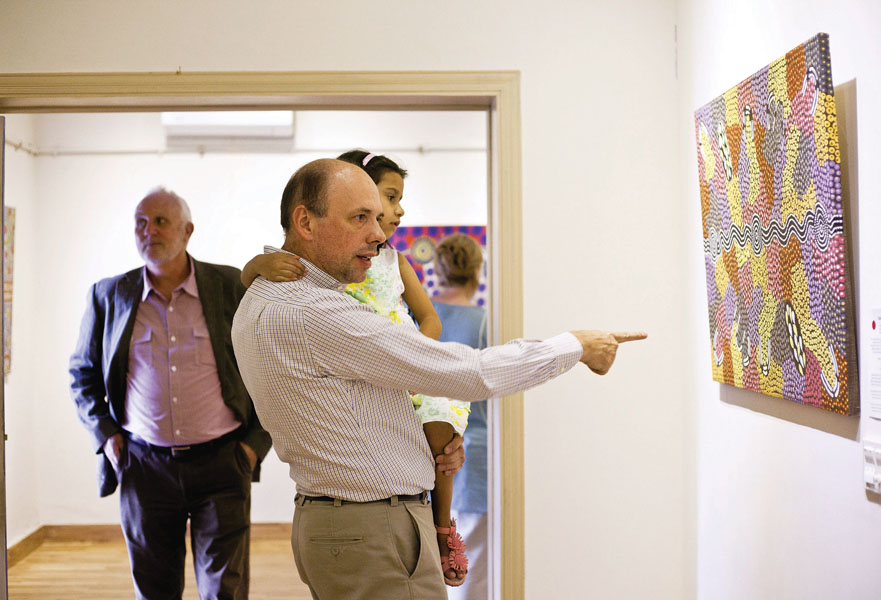
In aboriginal Australia, elders perpetuate heritage through storytelling in order to draw nostalgia and ownership of a rich, visual code, unique to each clan. The artistic canvas then becomes an extension of these aspirations in containing the complex relationship of these desert tribes to its landscape and people.
While difficult to imagine, and largely unknown within Pakistan, this western tradition, traversed continents to line the walls of the Nomad Gallery on Sunday, revealing the dotted, pulsating heritage of Australia’s desert communities. The exhibition, which consisted of 10 works from different aborigine artists, was made possible through the Australian High Commission in a bid to celebrate the inimitable form of art.

Known as dreamings, this form of expression embraced the permanence of the canvas in the 1960s — at an unassuming school in the Northern Territory, which is home to the Papunya community. The shift in medium is attributed to Geoffrey Bardon, an art teacher who encouraged men to paint these dreamings on the walls and doors of the school, preserving them in the strokes of acrylic paint for future generations to absorb, and take pride in.
Roseanne Morton’s dotted canvas — with the rudimentary title Yam Seeds — traces the trajectory of aboriginal women as they collect yam seeds used to make dough for bread. The canvas is a series of simple markings, suggesting on a surface level, the diet of the people and the meticulous scavenging that precedes each meal, though the dreaming takes on an ethnographic significance, using paint as a tool for recording how certain people lived at a certain time.
A more playful canvas, titled Bush Plum and Carpet Snake, reveals the surreal narrative of two snakes growing up together to carve out Central Australia. The narrative is almost undecipherable removed from its context and from the ancestral aspiration it takes shape from; however, it retains palpable energy and magnetism.
Dreamings are considered intellectual property and often passed on with great caution and ceremony. In this way, the markings of each dreaming cannot overlap and the mythical narratives are inextricably linked to lineage.
“While the paintings are created by different artists, they are linked through technique,” expressed Nageen Hayat, curator of the Nomad Gallery, where the aboriginal art is on display until April 16. According to Hayat, several viewers had inquired as to whether the paintings were made by the same artist and while the layered narratives of each canvas were entirely unique, the curator felt that the strong tradition of the art movement itself could be felt in the presence of the works created by different artists, with often diverse lineages.

Australian High Commissioner, Peter Heyward, suggested a similar linkage through the intrinsic attractiveness of the canvases, connected largely through a culture that has existed for thousands of years. The paintings are priced between $600 and $1640 and there is no commission on sales, the entire revenue goes directly to the artists in Australia.
Published in The Express Tribune, April 16th, 2014.
Like Life & Style on Facebook, follow @ETLifeandStyle on Twitter for the latest in fashion, gossip and entertainment.


1730803801-0/BeFunky-collage-(22)1730803801-0-165x106.webp)

1728377970-0/Menendez-Brothers-(1)1728377970-0-165x106.webp)

1730799445-0/Untitled-design-(52)1730799445-0-270x192.webp)
1730800230-0/Copy-of-Untitled-(5)1730800230-0-270x192.webp)







1730706072-0/Copy-of-Untitled-(2)1730706072-0-270x192.webp)
COMMENTS
Comments are moderated and generally will be posted if they are on-topic and not abusive.
For more information, please see our Comments FAQ